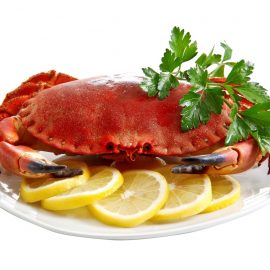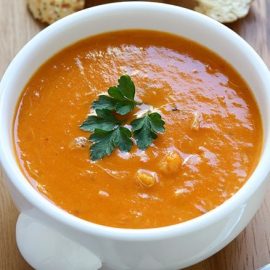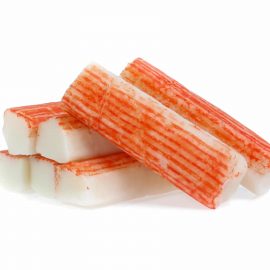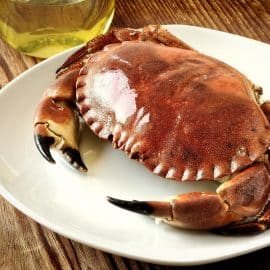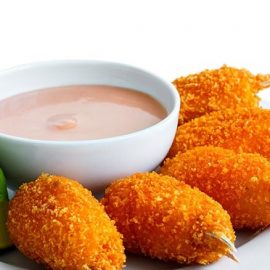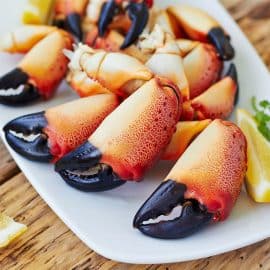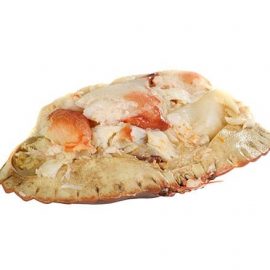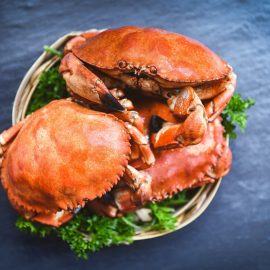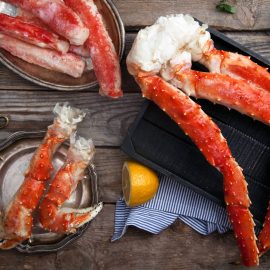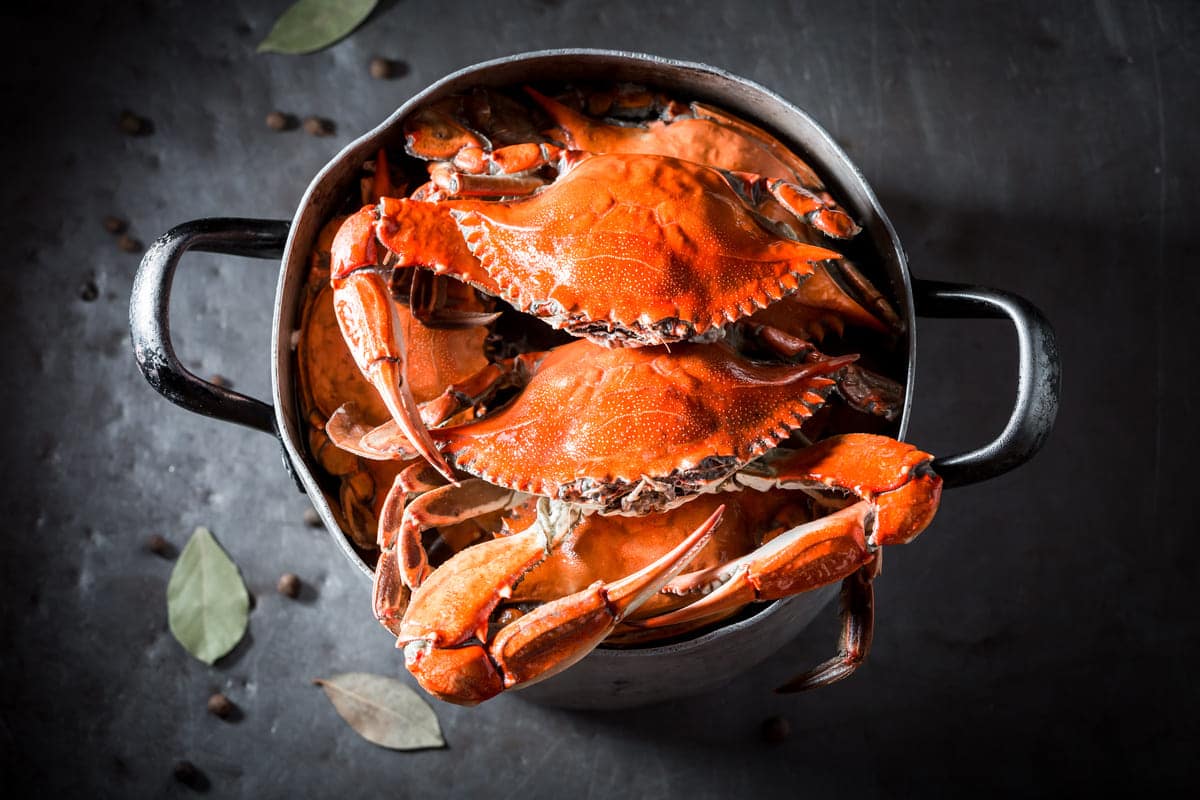
Introduction
Crabs, aquatic arthropods of the infraorder Brachyura, are found in the world’s oceans. They are especially abundant in tropical and semi-tropical waters but can also be found in temperate climates.
The scientific study of crabs has been ongoing since the early 19th century when scientists began researching their anatomy and behaviour. This research has helped us better understand the diversity of crab species worldwide and learn more about their ecology and biology.
Description and Characteristics
Crabs are a type of crustacean found in oceans and freshwater worldwide. They have five pairs of legs, two claws, and a carapace or shell.
In terms of physical characteristics, crabs vary significantly, ranging from just a few millimetres to more than four feet across. Their colour varies depending on species but typically includes shades of blue, green, brown or red.
Crabs also have antennae which they use to detect food and predators, and tactile hairs, which they use to feel their surroundings. Additionally, some species have eyes on stalks, enabling them to see further away.
Crabs have an exoskeleton made of chitin and calcium carbonate for protection, which is periodically shed as they grow. In addition to their physical characteristics, crabs are known for their ability to climb walls and trees, dig burrows in sand or mud, and scavenge food from the ocean floor.
An interesting fact about crabs is their ability to grow their shells. When outgrowing their shells, they moult and create new larger ones. This process can take several weeks or months, depending on the size of the crab and the environment in which it lives.
The most common crabs are hermit crabs, soft shell, Dungeness, freshwater, and the brown crabs.
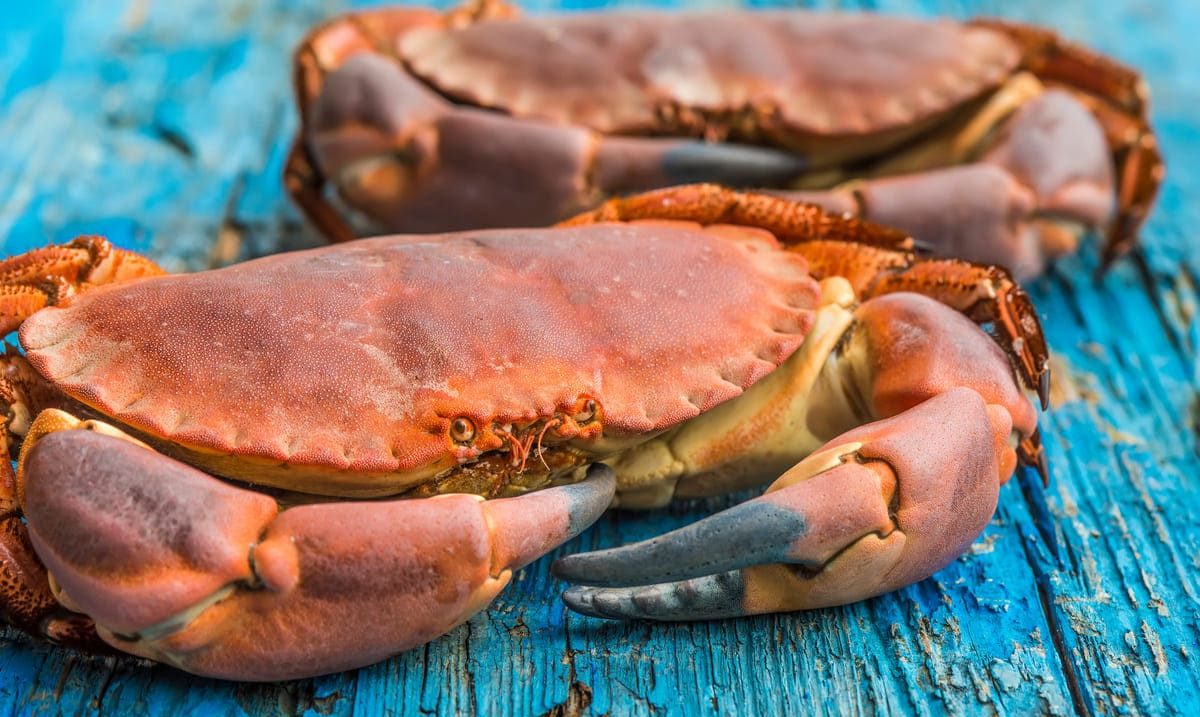
Biology
The biology of crabs is fascinating, as these crustaceans come in many shapes and sizes. Female crabs have an ovipositor and an unpaired abdomen, while male crabs have a fifth pair of pleopods. All crabs are ovoviviparous, meaning they lay eggs.
Crabs are widely sought after for their meaty food source, with some species consumed both cooked and raw. The flesh can be eaten fresh or used in a variety of recipes.
The coconut crab is one of the largest land crabs in the world and is considered a delicacy in some countries due to its sweet flavour and succulent texture when cooked correctly. In addition, many crabs produce eggs that can be enjoyed either boiled or fried.
In addition to providing delicious meals for humans, crabs also serve essential roles in the natural environment. Crabs filter feed on plankton and help keep aquatic ecosystems healthy by controlling algal populations. They are also preyed upon by numerous predators such as birds, fish and mammals, helping to maintain balance within food webs.
The Average Size Of A Crab?
The size of a crab is determined by its age and environment. Adult crabs tend to be larger than juvenile crabs, and those living in colder waters are usually larger than those in warmer waters. Additionally, some crabs may grow larger due to environmental factors such as an abundance of food or a lack of predators.
The average size of a crab can also vary greatly depending on the species. The largest crab species, the Japanese spider crab, can reach up to 12 feet in width when fully grown.
On the other hand, the smallest species of crabs, such as those found in tropical waters, maybe only be a few inches wide. They are, generally speaking. However, most crabs are between 3 and 8 inches across their carapace or body.
Crab sizes can also depend on what type they are:
- Marine crabs – These are typically large and range from 10 to 15 cm (4 to 6 inches) in size; however, some can reach up to 25 cm (10 inches).
- Freshwater crabs – These tend to be smaller than marine crabs and range from 4 to 8 cm (1.5 to 3 inches).
- Terrestrial crabs – These include land-dwelling species like hermit and coconut that can reach up to 20 cm (8 inches) across their carapace.
When it comes to measuring a crab’s size accurately, one should take into account not only its length but also its width and height. This is because each type of crab has distinctive features that affect its overall size measurement; for example, land-dwelling species have legs that protrude outwards, making them appear bigger than they are. Also, measuring a crab’s weight is vital as heavier specimens may look smaller but weigh more than lighter ones with similar dimensions.
Habitat And Distribution
Habitat and distribution of Crabs are varied, with many species living in both marine and terrestrial environments.
Marine crabs are found in the oceans, from the Arctic to Antarctica, from tropical coral reefs to temperate estuaries. Terrestrial crabs, usually in moist habitats such as forests and other coastal areas, live on land. Some crab species may even occupy freshwater, brackish water, or frozen habitats.
The Atlantic Ocean is a critical habitat for crabs, with over 400 species inhabiting its depths. These range from giant stone and Jonah crabs to small swimming crabs like the brown crab and the blue swimming crab.
The habitat and distribution for Crabs are incredibly diverse and span numerous ecosystems worldwide. An extended range demonstrates how adaptable these animals are to various environmental conditions, allowing them to survive successfully even during times of climate change or human interference.
Crab Fisheries
Crab fisheries are an essential component of oceanic economies, providing a variety of edible crab species for human consumption. The most commonly caught crabs in fisheries are the stone crab (Menippe mercenaria), blue crab (Callinectes sapidus), and Dungeness crab (Cancer magister). Fisheries often target these crabs as they are highly valued, commercially important species with well-developed markets.
In addition to their economic value, crab fisheries provide other significant benefits. For instance, some crab species are used for bait in the fishing industry, and crabs can also be used as indicators of ocean health.
Crabs play a crucial role in maintaining healthy ecosystems by keeping the populations of other organisms balanced; they are predators and prey to many different species.
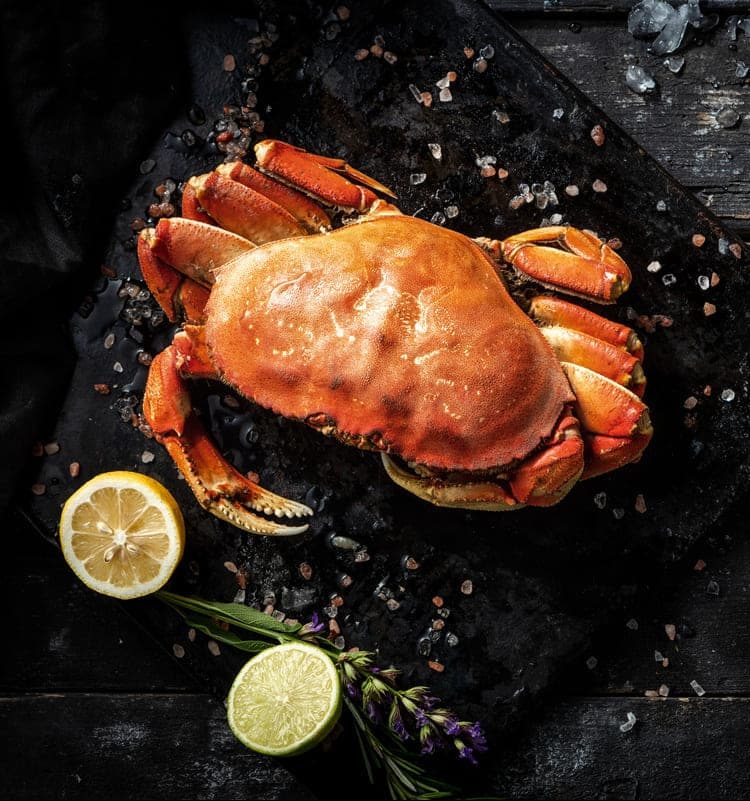
Furthermore, recreational fishing for crabs is a popular activity for many people around the world – providing a fun and relaxing activity that brings people together with nature:
- Recreational crabbing gives people an outdoor experience close to nature
- It is an accessible activity that can be enjoyed by both children and adults
- Crab fishing can bring communities together in shared celebration when catches are successful
These benefits demonstrate why crab fisheries remain vital to our global economy and culture. Despite this importance, there remain concerns about the sustainability of these fisheries due to overfishing, destruction of habitats, pollution, and climate change. As such, we must ensure sustainable management practices to protect our valuable resources for future generations.
Sustainable Practices
Sustainability is an important consideration when it comes to crab harvesting. Like a tightly woven net, the sustainability of the crab population must be carefully monitored for its resources to remain so that future generations may enjoy them.
To ensure a sustainable harvest of crabs, six st be implemented:
- increase the transparency of data and reporting;
- develop better monitoring systems;
- reduce bycatch;
- invest in research and development of new technologies;
- create incentives for sustainable fishing practices; and
- establish a global partnership between fishing industry stakeholders, governments and conservationists.
By following these steps, fishermen will be able to more accurately determine how much they can safely catch without detrimentally impacting the crab population.
Additionally, implementing incentives for sustainable practices will encourage fishermen to make responsible choices while still being able to make a living. Finally, the collaboration between stakeholders is essential to find solutions that will benefit both the environment and those who depend on it for their livelihoods.
These measures are crucial if we want our children and grandchildren to have the opportunity to enjoy this delicacy for years to come. Just like a strand of pearls needs each bead to remain intact for its beauty to shine through, we must take care now if we want our future generations’ plates adorned with succulent crabs.
Life Cycle of Crabs
The life cycle of a crab typically begins with the fertilisation of eggs. Depending on the species, the eggs are laid either in a mass of jelly or a hard case. After hatching, the larvae pass through a series of zoeal and megalopal stages before reaching adulthood. During these stages, they undergo substantial physical changes and develop the necessary body parts to survive in their environment.
At each stage, the young crabs must moult, which involves shedding their exoskeleton and growing a new, slightly larger one. Once they reach maturity, adult crabs can live up to two years but will eventually die after they have mated and spawned.
Females usually carry fertilised eggs until they hatch, while most male crabs remain close by for protection. After hatching, juvenile crabs disperse from their parents and search for food. In addition to looking for food sources, juveniles also need to find shelter and locations where they can safely moult without being disturbed by predators.
As adults, crabs are highly territorial and often compete for resources such as food or habitat with other individuals or even members of different species. They feed mainly on small invertebrates such as worms and crustaceans, easily found in tide pools or along rocky shores near their habitats.
Species And Taxonomy
The crab is an incredibly diverse, with over 4500 known species divided into 85 families.
Taxonomically speaking, crabs are placed in the order Decapoda. The most common crabs belong to the infraorder Brachyura, or true crabs.
There are many notable species within this infraorder, including horseshoe crabs, cornish crabs, blue crabs and king crabs. Each of these species has distinct physical characteristics that set them apart. Some of these traits include size and colour variation and specialised body structures such as claws or antennae.
Etymology
The word ‘crab’ etymology is said to have originated from the Old English word ‘craebe’, derived from the Proto-Germanic root ‘krabaz.’ This term eventually evolved into modern English terms such as crab, crawfish, and crayfish.
Crabs’ Diet
Crabs are omnivorous animals with a diet consisting of a variety of items. According to the Marine Education Society of Australasia, crab diets can include up to fifty food items, including small fish, molluscs, worms and detritus. Crabs also feed on algae and aquatic plants. Some crabs have even been observed catching and eating other crustaceans, such as shrimp and lobsters.
Crab As Food
Fresh crab is a popular seafood that is enjoyed all over the world. With its delicate, sweet flavour, the crab can be prepared in various ways to enjoy its unique taste. Crab has become increasingly popular as it provides an excellent source of protein and other nutrients.
The texture of crab meat varies between species and preparation methods. Generally, the meat is flaky and light with a slight sweetness.Depending on where it is sourced, the flavour of crab can range from mild to intense. For example, Alaskan king crab has a milder flavour than Dungeness crab, which has a more pronounced sweetness.
The type of cooking method will also affect the flavour of the final dish – steaming or boiling will often result in a sweeter taste, while baking or grilling will give the meat more smokiness and crunchiness.
When preparing crab dishes, choosing fresh ingredients is essential to ensure you get the best flavour possible. Fresh crabs should have firm shells with no discolouration or blemishes. If buying frozen crabmeat, check for any ice crystals, as this could indicate that the product was not freshly frozen.
Before cooking, remove any excess moisture from the meat by patting it dry with paper towels or squeezing it gently between your fingers. To capture the most flavour out of your dish, season your ingredients lightly, so they don’t overpower the natural sweetness of the crabmeat itself.
When it comes time to serve your dish, present it attractively on a plate so guests can appreciate its colour and aroma before tasting it for themselves!
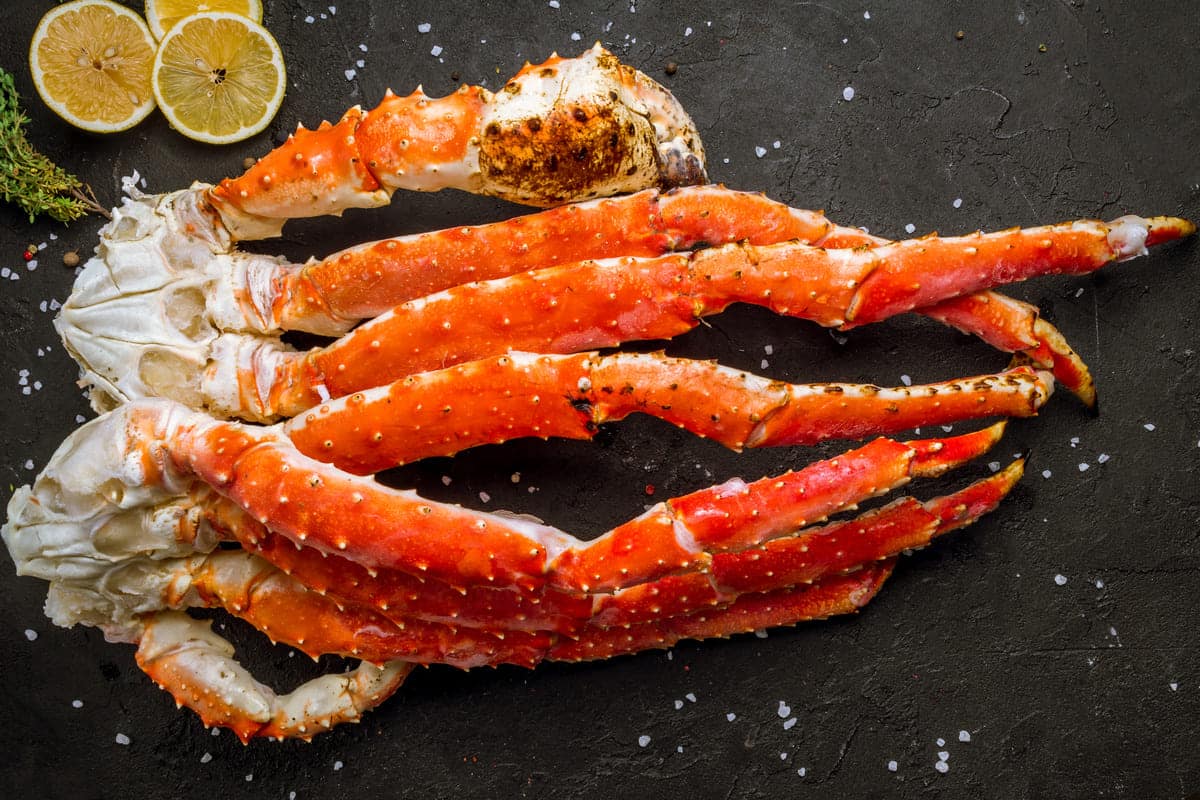
Comparison To Other Seafood
Crabs are a popular seafood item, often compared to other types of fish. In terms of flavour and texture, crabs have a unique taste and are highly sought after due to their sweet meat. The meat also has a firmness that is not found in many other types of seafood. Additionally, crabs have different styles, which can be boiled, steamed, fried, or eaten raw, depending on the kind of crab being prepared.
In comparison to other fish, crabs offer more nutritional value because they are high in protein and low in fat. They are also packed with essential vitamins and minerals like iron, calcium, magnesium, phosphorus and zinc. Furthermore, crabs contain omega-3 fatty acids, which can help reduce inflammation and support cardiovascular health. Compared to other types of fish, such as salmon or tuna, crabs may be higher in some dietary components, such as monounsaturated fatty acids.
Crabs also differ from most other types of fish due to their distinctive shells and claws that require special preparation techniques when cooking them. Moreover, they tend to have much longer life cycles than most other species of fish, making it more challenging to sustainably manage crab fisheries around the world. As a result, consumers need to consider the sustainability practices used when purchasing crab products to ensure global crab populations’ longevity.
Health Benefits Of Eating Crabs
Eating crabs can provide numerous health benefits due to their high protein levels and essential vitamins and minerals like iron, zinc, magnesium and selenium. For example, studies suggest that regular consumption of crab meat may help reduce the risk of heart disease by lowering “bad” LDL cholesterol levels while raising beneficial HDL cholesterol levels. In addition, crabs are an excellent source of omega-3 fatty acids, which can help reduce inflammation throughout the body.
Some other potential health benefits associated with crab consumption include:
- Improved brain health: Omega-3 fatty acids found in crab meat may help improve cognitive functions such as memory and learning.
- Weight management: Crab is low in calories yet packed with essential nutrients like protein which can help promote weight loss while still providing sufficient energy to carry out daily activities.
- Bone strength: The high amounts of phosphorus in crab meat helps build strong bones and teeth while also aiding in maintaining healthy muscle function.
- Blood pressure control: Regularly eating crab can help reduce hypertension due to its potassium content which helps regulate blood pressure levels.
The nutritional value found in crab makes it an ideal food for individuals looking to maintain a balanced diet and reap the many health benefits associated with its consumption. However, moderation should be practised when consuming seafood, as overindulgence could adversely affect overall well-being.
Culinary Uses
Crab is a popular seafood dish in many countries, with almost five million tonnes of crab being consumed annually. Depending on the type of crab, preparation methods can vary greatly. For instance, king crab must be cooked for approximately 15 minutes, and snow crab should be boiled for about 10 minutes.
When cooking fresh or live crabs, one should clean them to remove any dirt or debris from their shells. The next step is to boil water in a large pot and add salt and other seasonings before adding the live crabs into the boiling water. After boiling the crabs for the appropriate amount of time, they can be removed and served either hot or cold with accompanying sauces such as melted butter or garlic butter.
Additionally, some prefer steaming their crabs over boiling them, as this method preserves more flavour while ensuring that they are adequately cooked.
Aside from boiling and steaming methods, several other techniques can be used to prepare delicious meals with crab, including baking, frying and grilling. Each method has its unique flavour profile, which allows cooks to create various dishes depending on their preferences and taste preferences. With proper preparation techniques, the crab can make an excellent addition to any meal that will tantalise diners’ taste buds.
- Steaming- requires no oil or fat and preserves the ingredients’ moisture while infusing them with flavour. It is best suited for light dishes such as steamed fish or vegetables with light sauces like soy sauce or citrus juices.
- Boiling allows the flavours to combine quickly without overcooking the ingredients. This method is best for stews and soups with more intense flavours, such as tomato-based sauces or creamy broths.
- Baking- helps to lock in moisture while adding a crisp texture to foods like fish cakes or casseroles with breadcrumbs on top.
- Sautéing- adds flavour by browning the food quickly over high heat in a small amount of oil or butter. This method works well for quick dishes such as stir-fries and fried rice, where things need to cook quickly but retain their texture and flavour.
- Frying- adds crunchy texture while infusing food with intense flavours from spices and seasonings used during cooking. This method works great for dishes like tempura shrimp or breaded calamari rings, where a dish’s desired elements are crispy coating and deep-fried taste.
Best Side Dishes Paired With
Crab has often been praised for its delicious flavour and versatility, making it a popular choice for many meals. As such, it is imperative to consider what side dishes can best complement this seafood delicacy. Whether you are looking to create a savoury dish or something more exotic, there are plenty of options for sides that pair well with the crab.
When selecting a side dish, seasonality should be taken into account. Fresh vegetables like asparagus, green beans, and carrots are great accompaniments to crab dishes. Potatoes, rice, and pasta are excellent choices for those who prefer starchy sides. For an added splash of flavour, citrus fruits like lemons and limes can be used to give the dish extra zest. Herbs such as dill and tarragon also play an integral role in creating an enjoyable taste experience with crab-based meals.
The key is balance, no matter what type of flavours you choose to combine with your crab dishes. You want the side dish to be balanced and manageable during the main meal, and you want to find harmony between the two elements so diners can genuinely appreciate both flavours. With careful consideration of seasonality, ingredients and flavours, anyone can create a balanced meal featuring delicious crab and its perfect sidekick!
Popular Recipes
Crab is a popular seafood that can be found in many dishes worldwide. It is versatile and can be cooked numerous ways, making it an ideal ingredient for tasty meals. Popular recipes featuring crab include crab cakes, crab bisque, and crab Rangoon.
When cooking with crab, one should consider the type of dish they are making. For example, lump crab meat is best suited for soups and salads as it holds its shape better than other crab meat, such as claw or flake. Claw or flake meat works well for dishes like stews or casseroles because it breaks up easily and absorbs flavours better. Various herbs and spices can also be used to bring out the taste of the crab.
Conclusion
In conclusion, crabs are an essential component of marine and freshwater ecosystems around the globe due to their various roles as predators, scavengers, and prey items for other organisms. They also provide health benefits when eaten and should be stored properly for the best results. Lastly, care should always be taken when handling crabs due to the potential for injury from their claws.

